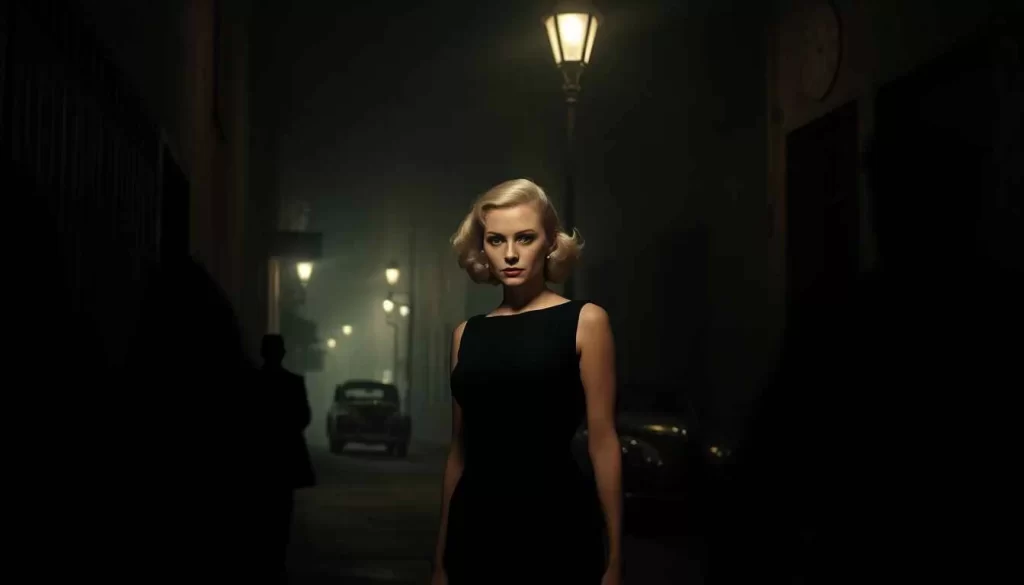
The Black Dahlia murder remains one of America’s most chilling and infamous unsolved cases. The story has fascinated people for over 70 years, inspiring books, movies, and countless theories. Its dark allure keeps audiences hooked, especially as it plays a role in popular media like American Horror Story. True crime stories like this reveal a lot about society, fear, and obsession. They also show how fiction and reality often blend in the minds of fans and storytellers alike.
The Origins of the Black Dahlia Murder
The Victim: Elizabeth Short
Elizabeth Short was a young woman full of dreams. She wanted to become an actress and had a bright personality. Born in Boston, she moved to Los Angeles, eager to make her mark. Elizabeth was described as charming and lively, but her life was full of hardships. Her tragic ending shocked everyone. She was just 22 years old when her body was discovered.
The Crime Scene
The murder happened in Leimert Park, Los Angeles, on January 15, 1947. Elizabeth’s body was found lying face down, cut in half at the waist. The crime scene was brutal — her body was carefully dissected, with signs of torture and mutilation. It was a disturbing scene that made headlines across the country. The killer left behind no immediate clues, adding layers to the mystery.
Initial Investigation and Media Sensation
Police rushed to solve the case, but it proved tough. They followed many leads, but the case stayed cold. The media exploded with stories, calling her the “Black Dahlia” because of her dark hair and a Hollywood connection. The nickname added an air of mystery, turning her into a national sensation. Everyone wanted to know who killed Elizabeth Short and why.
Theories and Suspects: Unraveling the Mystery
Official Investigations and Leading Suspects
Law enforcement tried everything to crack the case. Over the years, many suspects emerged. One popular suspect was George Hodel, a doctor with a dark past. Some believed he was involved because of his proximity and strange behavior. Despite many interviews and searches, no one was ever convicted. The case remains open, with clues pointing in many directions.
Conspiracy Theories and Rumors
The Black Dahlia case became a magnet for rumors. Some said the government was involved to cover up secrets. Others thought organized crime was behind it. Wild stories about cover-ups, secret societies, and even alien connections have circulated. Most remain unproven, but these tales keep the legend alive.
The Impact of Media on the Case
Media coverage made the case more confusing. Sensational stories distracted from real clues. Coverage often painted suspects in broad strokes, influencing public opinion unfairly. The case showed how press can help or hinder police work, shaping the legend of the Black Dahlia for generations.
The Black Dahlia’s Cultural Legacy
Impact on Crime and Media
The case changed how detectives approach murders. It also influenced journalism, encouraging sensational headlines. Many books, movies, and TV series drew inspiration from Elizabeth’s story. It launched a new wave of true crime storytelling, with a focus on dark details.
The Black Dahlia in Popular Culture
The story is everywhere now. Films like The Black Dahlia and serials in American Horror Story draw on her tragic story. The case’s themes of obsession, beauty, and darkness make it perfect for horror and thriller genres. Elizabeth became a symbol of Hollywood’s dark side—a cautionary tale wrapped in glamour.
The Mystery’s Role in Los Angeles History
The Black Dahlia reflects post-war fears in America. It shows Hollywood’s obsession with fame and beauty. The case also reveals societal tensions of the time, exposing a city obsessed with glamour and secrets. Her story is woven into L.A.’s history as a dark mirror of its shining image.
The Black Dahlia & American Horror Story: Fiction Meets Reality
Overview of American Horror Story: Hotel and Other Seasons
American Horror Story weaves Elizabeth Short’s story into its dark stories. Specifically, the Hotel season has elements inspired by her tragedy. Creators take tiny details, then stretch them into compelling fiction. They blend real history with horror, making it more intense.
The Dark Aesthetic and Symbolism
The show uses noir visuals inspired by the 1940s. Dark halls, blood-red drapes, and ghostly images evoke the era’s mystery. Symbolism like black roses, broken mirrors, and shadows link to Elizabeth’s story. These elements add depth to the horror and hint at hidden truths.
Fans’ Perspective and Critical Reception
Many viewers find the show creepy and fascinating. Some love how it brings history into the horror genre. Others criticize it for taking too many creative liberties. Still, the portrayal sparks curiosity about the real case behind the fiction. It keeps the legend alive, blending fact and fantasy.
Lessons, Myths, and Truths
What We Can Learn from the Case
The Black Dahlia teaches us about the limits of police work and media influence. It shows that many clues can go cold if not followed up. It also highlights the importance of critical thinking when your favorite true crime story is fictionalized.
Debunking Myths and Clarifying Facts
Many misconceptions cloud the case. Elizabeth Short was not a Hollywood starlet, despite what movies suggest. Her death was not connected to any secret evil plots. We know she was just a young woman trying to find her way. Confirmed facts remain limited, which fuels rumors.
Actionable Tips for True Crime Enthusiasts
Always verify facts before accepting stories as true. Join communities that focus on credible research. Respect the victims and remember that real lives are involved. Consume true crime stories responsibly, balancing entertainment with respect.
Conclusion
The Black Dahlia remains a dark mystery that haunts Hollywood and America. It’s a tale of beauty, brutality, and unanswered questions. While shows like American Horror Story dramatize her story, understanding the real history reminds us of the dangers of obsession. The case captures a uniquely American fascination with secrets hidden in plain sight. Whether fact or fiction, her story teaches us to look deeper and question what lies beneath the surface.